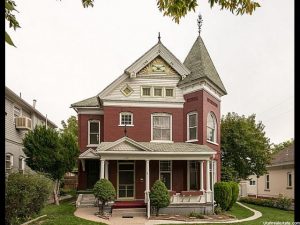 One of the main criteria specified by home buyers is the age of the home. Many people want a newer home, something they can move into and which requires little or no work. Other people are looking for older homes, something with character and unique features. Of course there are advantages are disadvantages associated with each choice.
One of the main criteria specified by home buyers is the age of the home. Many people want a newer home, something they can move into and which requires little or no work. Other people are looking for older homes, something with character and unique features. Of course there are advantages are disadvantages associated with each choice.
When buying an older home there are certain areas which buyers need to be aware of, and which can be a major expense if overlooked.
The Roof – The one the most important areas of concern is the roof. If the roof is shot then water can gain access to other areas of the house and cause untold damage. If the roof needs to be replaced, then you can either just add another layer shingles (assuming that’s what’s on there) or if there are already multiple layers, you may need to strip off all the layers and start again. Obviously the second option is more expensive.
Electrical – Needless to say if you buy an older home (unless it has been rewired) the chances are you will encounter older electrical wiring that does not confirm today’s code. One of the most common types of wiring that was widely used between the 1880’s and the 1930’s, is knob and tube. One of the main disadvantages of this wiring is that there is no ground wire. Replacing electrical wiring can be very expensive, especially when you start tearing up walls to run the new wires.
Heating and Air – While modern homes usually come with forced heat and central air, older homes come with a variety of systems. The most common form of air conditioning is from Swamp Coolers / evaporated coolers. These are usually located on the roof of the property and provide cool air through the evaporation of water. These are only really effective in dryer climates, and for single level homes. Heating in older homes is commonly provided by radiant heat, where gas is used to heat water and force through pipes into radiators. While not instantaneous like forced air heating, it is and can be a every effective form if heating.
Windows – Less efficient single pane windows are the norm for older homes. These are not really efficient and can be in bad shape.
Siding – Replacing the siding is not cheap. Siding that looks in bad shape may just need a new lick of paint, or it may need to be completely replaced. If the home is made of brick then it can start to deteriorate and may need to be repaired. Brickwork that has started to deteriorate if often painted, this helps keep the elements out and stops it getting worse.
Style – Do you like green shag carpet, or pink bathrooms? Often older homes can be a style time capsule, some of which you may want to keep, while others you may want to update.
General Wear and Tear – This includes things like replacing the carpet, repainting or refinishing hardwood floors.
Termites – Any piece of wood that touches the ground is susceptible to termites. Both the inside, and the outside of the home should to be checked for signs of termite damage.
The secret to buying an older home is to hire a good home inspector, they will be able to check for all of the above (the style will be down to you), highlight any problems and provide advice on what you need to do to address them.